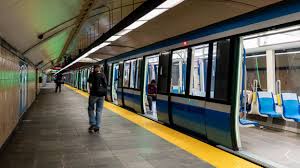Latest Updates on the Toronto Transit Commission (TTC)

Importance of the TTC in Toronto
The Toronto Transit Commission (TTC) plays a vital role in the day-to-day life of millions of residents and visitors in Toronto. As one of the largest public transit systems in North America, it provides essential services that facilitate the movement of people across the city. With the rising population and growing concerns around climate change, transit systems like the TTC have become increasingly relevant in discussions about urban development and sustainability.
Recent Developments and Challenges
In recent months, the TTC has been undergoing various changes aimed at improving services and tackling challenges. One significant update is the introduction of the “TTC Rides” program, which allows users to book on-demand transit services in specific areas of the city, particularly where public transit options are limited. This initiative is especially beneficial for residents in underserved neighborhoods who need reliable transportation.
Another pertinent change is the ongoing construction of the Ontario Line, a new subway line aimed at alleviating congestion on existing routes and providing better access to downtown Toronto. This $10.9 billion project is set to significantly enhance connectivity across the city, with projections of completion by 2030.
Moreover, the TTC has faced challenges due to budget constraints and the aftereffects of the COVID-19 pandemic, which resulted in a significant decrease in ridership. To address these financial difficulties, the commission is looking at different revenue-generating strategies, including partnerships with private companies and the introduction of more advertising on buses and subway cars.
Future Outlook for the TTC
Looking ahead, the TTC aims to expand its services further with plans to incorporate electric buses into its fleet, promoting greener transit solutions. As cities across Canada are grappling with environmental concerns, the TTC’s commitment to reducing its carbon footprint reflects the overarching goals of improving both service and sustainability.
In conclusion, the TTC remains a critical element of Toronto’s infrastructure and urban landscape. As the city moves forward, ongoing investments and strategic initiatives will be crucial to ensure the transit system evolves effectively to meet the needs of its residents. For commuters, understanding these changes can enhance their transit experience and encourage the use of public transport as a sustainable alternative to driving.









